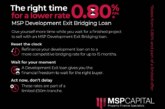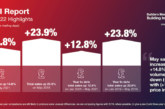
Land promotion and option agreements will have tax consequences for developers, says Colin Laidlaw and Jo White from Kreston Reeves.
Land owners are increasingly looking at ways to utilise their assets more effectively and in a tax efficient manner. Coupled with the relaxation in planning rules and the opportunity that more land is to be used for housing, this inevitably leads to thoughts about the land they own. To help them achieve the best price for the land they often engage with land promoters and developers.
Land promotion agreements, also known as planning promotion agreements, are arrangements where a promotor aims to obtain planning agreement on your land and, once successful, finds a buyer. There is often an upfront non-refundable payment from the promotor to the landowner for entering into the agreement.
The promoter charges a fee to the landowner for its services based on a percentage of the selling price, and it may also reduce the sale proceeds by the planning costs it has incurred.
The main benefit for the landowner is that he/she doesn’t have to incur a considerable upfront cost in obtaining planning permission, especially as the time to obtain it can be lengthy. If planning is not obtained, there is normally no charge. This benefit is offset by the fees payable to the promotion agent for its services.
An Option agreement will typically see a developer take on the responsibility of securing planning permission with an option to buy the land at a certain point, typically once planning has been obtained. The developer’s purchase is for an agreed price which reflects the market value of the land less an allowance for costs incurred in securing the planning permission and possibly also in lieu of a promotion fee that would otherwise have been charged. Options are generally time sensitive and there may be a fee paid to secure the option, as well as to extend it if necessary.
The benefits of this arrangement for the landowner include that of promotion agreements but may also give some certainty to the sale price in advance of permission being achieved. However, this price is generally fixed in advance and may not necessarily therefore be reflective of the market value at the time planning has been obtained, particularly where density changes or if there is a significant time delay.
There are differences between the two and variations on a theme (such as hybrid arrangements) and there are potentially significant issues/costs which need to be understood and managed if you are to mitigate these and achieve the most appropriate and efficient tax outcome.
Developers need to give consideration to the following:
- Corporation Tax – the timing of tax relief on their costs may not be as expected due to the tax rules following the relevant accounting principles.
- VAT – No VAT is generally payable on an option payment or the land bought, unless an option to tax has been exercised. If the option to tax has been exercised by the landowner, VAT is payable. This is likely to be recoverable if new dwellings are developed and sold but care needs to be taken if the land is sold on without development. The mechanism for valuation of the land is important and there may be a deemed supply where the land purchase value is reduced in lieu of promotion costs/fee.
- SDLT – this is payable on the consideration for the land. The primary difference between the two options will be that SDLT could be paid earlier under the option agreement should there be an option payment made at the outset of the agreement.
- SDLT in either situation is payable on the VAT inclusive price and therefore consideration as to the VAT position is important before ultimately determining the SDLT cost to you.
This can be a complicated area as no two arrangements are the same. As the numbers involved are high it is important to seek advice ideally before signing agreements.









